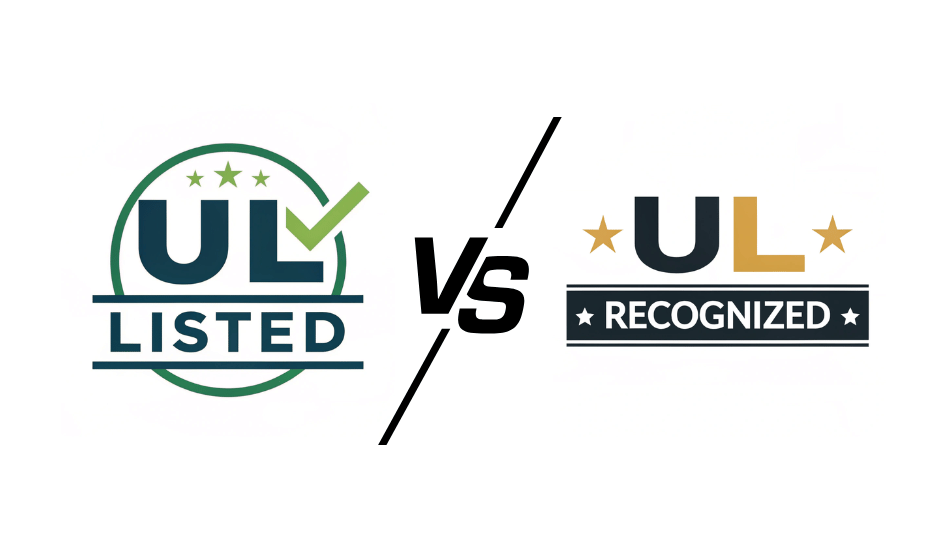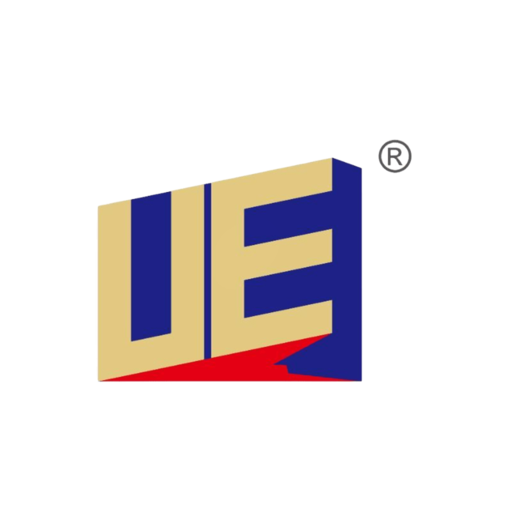When it comes to ensuring the safety and compliance of power supplies used in medical equipment, ITE (Information Technology Equipment), and other applications, certifications from Underwriters Laboratories (UL) play a crucial role. Among the most common certifications are UL Listed and UL Recognized, each serving different purposes in product safety and design.
Understanding the distinction between these certifications is critical for manufacturers and designers of power supplies, as well as for end-users in industries like healthcare and IT. This article explores the differences between UL Listed and UL Recognized certifications and their specific implications for power supplies.
Understanding UL Certifications
UL certifications are safety marks that signify a product or component complies with specific standards. These certifications are particularly important for power supplies, as they directly impact the reliability and safety of devices in critical applications.
- UL Listed: Indicates that a complete product is tested and certified for safety in its intended use.
- UL Recognized: Refers to components or subassemblies tested for safety when used as part of a larger system.
UL Listed in Power Supplies
A UL Listed power supply is a fully tested, standalone product certified for end-use safety. This certification applies to devices ready for installation and use without further evaluation.
Key Features of UL Listed Power Supplies
Scope of Testing:
The entire power supply unit (PSU) is evaluated for safety, including electrical, thermal, and mechanical aspects.Application:
Designed for direct use in environments such as industrial machinery, consumer electronics, medical devices, and IT systems.Mark:
The UL Listed mark appears on the power supply, signifying it meets all necessary safety standards.
Examples of UL Listed Power Supplies
Medical Power Supplies:
Power supplies used in ventilators, infusion pumps, and diagnostic equipment. These are tested to meet stringent medical standards like UL 60601-1, ensuring patient and operator safety.ITE Power Supplies:
Units powering computers, servers, and networking equipment that comply with UL standards such as UL 60950-1 or the updated UL 62368-1 for audio-visual and IT equipment.
Importance in Medical and ITE Applications
UL Listed power supplies provide confidence that the device can operate safely in its intended environment. For instance:
- In medical applications, compliance ensures the device won’t pose risks to patients or operators, even under high-demand conditions.
- In ITE equipment, UL Listing assures reliability in data centers or other critical IT infrastructure.
UL Recognized in Power Supplies
A UL Recognized power supply refers to components or subassemblies designed to be part of a larger system. Unlike UL Listed products, Recognized components require additional evaluation when integrated into a final device.
Key Features of UL Recognized Power Supplies
Scope of Testing:
Specific elements of the power supply are tested for safety under defined conditions of use.Application:
Typically used by manufacturers who integrate the power supply into a larger device or system.Mark:
The UL Recognized Component Mark (a backward "UR" symbol) indicates that the component is certified for system integration.
Examples of UL Recognized Power Supplies
Custom or OEM Power Supplies:
Designed for integration into proprietary systems, such as specialized medical diagnostic machines or industrial controllers.Modular Power Supplies:
Components like power bricks or modules used in larger systems, requiring evaluation in the final product.
Importance in Medical and ITE Applications
UL Recognized power supplies offer flexibility for manufacturers to design custom solutions while maintaining compliance. For instance:
- In medical devices, Recognized components can be part of ventilators or MRI systems, but the entire device needs final UL Listing for end-use safety.
- In ITE applications, Recognized power modules may be used in rack-mounted server systems, where the overall unit undergoes further certification.

Key Differences in Power Supply Applications
| Feature | UL Listed | UL Recognized |
|---|---|---|
| Definition | Fully certified, standalone product | Certified component for integration |
| Testing Scope | Entire unit, ready for end-use | Specific features, needs further testing |
| Mark | UL Listed logo | UL Recognized Component logo (UR) |
| Examples | Medical PSUs, ITE adapters | OEM modules, internal components |
| Application | Direct installation and use | Requires evaluation in the final device |
| Regulatory Role | Ensures end-user safety | Ensures safety for manufacturers |
Importance of Choosing the Right Certification
For Manufacturers
- UL Listed power supplies simplify compliance by providing a fully certified solution for devices.
- UL Recognized power supplies allow flexibility in designing custom systems while maintaining regulatory standards.
For Medical Devices
Medical power supplies must meet stringent safety requirements due to the sensitive environments in which they operate. UL Listing ensures these power supplies meet standards like UL 60601-1, addressing risks such as electrical shock and fire hazards.
For IT Equipment
ITE power supplies certified as UL Listed reduce downtime and ensure compliance with evolving standards like UL 62368-1, critical for modern IT infrastructure.
Challenges and Considerations
Integration Complexity:
UL Recognized power supplies require careful evaluation during system integration to ensure compliance in the final product.Cost Implications:
While UL Listed products may cost more upfront, they eliminate the need for additional testing, saving time and resources in the long run.Evolving Standards:
As standards evolve, both UL Listed and UL Recognized certifications need to be updated, particularly in fields like healthcare and IT where technology advances rapidly.
Understanding the difference between UL Listed and UL Recognized certifications is vital for selecting the right power supply in medical, ITE, and industrial applications. UL Listed power supplies offer a ready-to-use, fully certified solution, ideal for devices requiring immediate compliance. Meanwhile, UL Recognized power supplies provide flexibility for system integrators to design customized solutions while maintaining safety and performance standards.
In both cases, ensuring compliance not only enhances device reliability but also protects users, making UL certifications an essential part of the power supply ecosystem.




